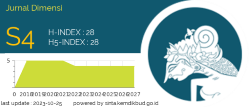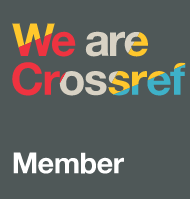THE RELATIONSHIP BETWEEN LEARNING STYLE PREFERENCES AND INTEREST IN YOUTUBE FOR LEARNING ENGLISH AT UNIVERSITAS RIAU KEPULAUAN
Abstract
Full Text:
PDFReferences
Alharbi, M., & Paul, D. (2020). The Influence of Learning Styles on Academic Performance in Blended and Online Learning Settings.
International Journal of Emerging Technologies in Learning (iJET), 15(21), 4–18. https://doi.org/10.26803/ijlter.22.12.1
Dabamona, & Andarifa, Y. (2022). The Use of Youtube for Learning English : Exploring. Journal of Language, Literature, and Linguistics, 3(1), 69–89. https://doi.org/10.26858/interference.v3i1.31475
Felanie, R. (2021). The Effect of Using Youtube Videos on Students’ Writing Descriptive Text Across Learning Styles. Jurnal Pendidikan: Teori, Penelitian, Dan Pengembangan, 6(1), 109. https://doi.org/10.17977/jptpp.v6i1.14402
Fleming, N. D. ., Smith, R., & Robson, G. (2011). Sports coaching and learning : using learning preferences to enhance performance. 77.
İlter, B. G. (2015). How does Technology Affect Language Learning Process at an Early Age? Procedia - Social and Behavioral Sciences, 199, 311–316. https://doi.org/10.1016/j.sbspro.2015.07.552
Khanal, L., Shah, S., & Koirala, S. (2014). Exploration of preferred learning styles in medical education using VARK modal. Russian Open Medical Journal, 3(3), 1–8. https://doi.org/10.15275/rusomj.2014.0305
Mohamed, F., & Shoufan, A. (2022). Choosing YouTube Videos for Self-Directed Learning. IEEE Access, 10(ii), 51155–51166. https://doi.org/10.1109/ACCESS.2022.3174368
Mozaffari, H. R., Janatolmakan, M., Sharifi, R., Ghandinejad, F., Andayeshgar, B., & Khatony, A. (2020). The relationship between the vark learning styles and academic achievement in dental students. Advances in Medical Education and Practice, 11, 15–19. https://doi.org/10.2147/AMEP.S235002
Othman, N., & Amiruddin, M. H. (2010). Different perspectives of learning styles from VARK model. Procedia - Social and Behavioral Sciences, 7(2), 652–660. https://doi.org/10.1016/j.sbspro.2010.10.088
Roellisa, A. H. (2024). Efl Students’ Preferences In Using Youtube Channel For Improving Their Speaking Ability. Doctoral Dissertation, UIN Ar-Raniry Banda Aceh.
Rufino, G. G. (2024). International Journal of English Language Studies Methods Used in YouTube for Teaching and Learning English Language: A Systematic Literature Review. 2014. https://doi.org/10.32996/ijels
Shopia, K., Sabila, D., & Purnawati. (2022). Students’ Interest in Learning English through YouTube (A Case Study in Senior High School of Sekolah Alam Cikeas Bogor). Stairs, 3(1), 10–18. https://doi.org/10.21009/stairs.3.1.2
Subagja, S., & Rubini, B. (2023). Analysis of Student Learning Styles Using Fleming’s VARK Model in Science Subject. Jurnal Pembelajaran Dan Biologi Nukleus, 9(1), 31–39. https://doi.org/10.36987/jpbn.v9i1.3752
Suci, P. R., Yelliza, Y., & Elmiati, E. (2022). Students’ Interest on Using Youtube in Learning English. Horizon, 2(2), 193–202. https://doi.org/10.22202/horizon.v2i2.5585
Sugiyono. (2019). Metode Penelitian Kuantitatif, Kualitatif, dan R&D (26th ed.). Bandung: Alfabeta.
DOI: https://doi.org/10.33373/dms.v13i3.8194
Refbacks
- There are currently no refbacks.

This work is licensed under a Creative Commons Attribution 4.0 International License.











